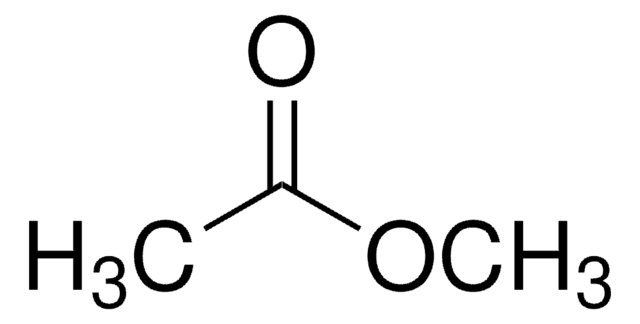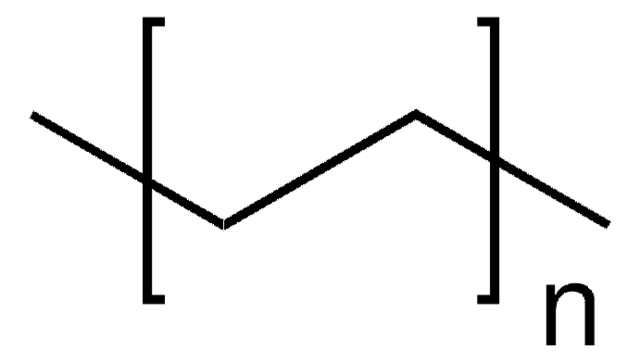W267619
Methylacetat
natural, 98%, FG
About This Item
Empfohlene Produkte
Qualität
FG
Halal
Kosher
natural
Qualitätsniveau
Einhaltung gesetzlicher Vorschriften
EU Regulation 1334/2008 & 178/2002
FDA 21 CFR 117
FDA 21 CFR 175.105
Dampfdichte
2.55 (vs air)
Dampfdruck
165 mmHg ( 20 °C)
Assay
98%
Form
liquid
Selbstzündungstemp.
936 °F
Expl.-Gr.
16 %
Brechungsindex
n20/D 1.361 (lit.)
bp
57-58 °C (lit.)
mp (Schmelzpunkt)
−98 °C (lit.)
Dichte
0.934 g/mL at 25 °C
Anwendung(en)
flavors and fragrances
Dokumentation
see Safety & Documentation for available documents
Nahrungsmittelallergen
no known allergens
Organoleptisch
ethereal; fruity; sweet
SMILES String
COC(C)=O
InChI
1S/C3H6O2/c1-3(4)5-2/h1-2H3
InChIKey
KXKVLQRXCPHEJC-UHFFFAOYSA-N
Suchen Sie nach ähnlichen Produkten? Aufrufen Leitfaden zum Produktvergleich
Signalwort
Danger
H-Sätze
Gefahreneinstufungen
Eye Irrit. 2 - Flam. Liq. 2 - STOT SE 3
Zielorgane
Central nervous system
Zusätzliche Gefahrenhinweise
Lagerklassenschlüssel
3 - Flammable liquids
WGK
WGK 1
Flammpunkt (°F)
8.6 °F - closed cup
Flammpunkt (°C)
-13 °C - closed cup
Persönliche Schutzausrüstung
Eyeshields, Faceshields, Gloves
Hier finden Sie alle aktuellen Versionen:
Besitzen Sie dieses Produkt bereits?
In der Dokumentenbibliothek finden Sie die Dokumentation zu den Produkten, die Sie kürzlich erworben haben.
Unser Team von Wissenschaftlern verfügt über Erfahrung in allen Forschungsbereichen einschließlich Life Science, Materialwissenschaften, chemischer Synthese, Chromatographie, Analytik und vielen mehr..
Setzen Sie sich mit dem technischen Dienst in Verbindung.








